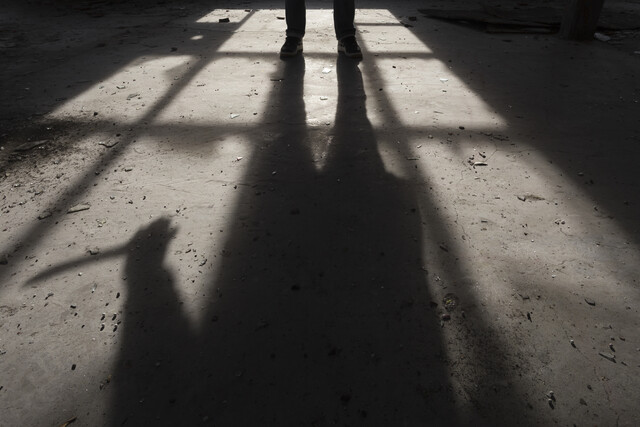Introduction
In addition to having the educational knowledge and gaining experience as a crime scene investigator, the tools of the trade make it possible for the job of processing a crime scene to be done properly. Hundreds of items make up a typical crime scene kit, which may include anything from Q-tips to bolt cutters to a hacksaw. Big or small, shared or separately owned, a crime scene investigator's crime scene kit offers the supplies, tools and protective gear to get the job done right.
Well-stocked crime scene kits typically come with the basic equipment deemed necessary by various law enforcement agencies around the country and may differ in what is termed as "basic supplies", but a crime scene investigator may always add to his or her kit if necessary. Some crime scene investigators tend to use more of one supply than another, or some tools more than others, and such will always depend on location, situation and crime scene. However, there are a few basics that should be stored in every crime scene kit.
Such tools may be typical garage type tools like hammers, pliers and crowbars, but may also include such items as thermometers, flashlights, batteries, and spotlights and extension cords. Almost all crime scene kits will include cotton gloves and surgical gloves, as well as cellophane tape for lifting prints and rulers to determine size and ratio in crime scene photographs.
A well-stocked kit will also include forceps or tweezers of various sizes and stocks of cotton swabs, swatches and clear plastic evidence bags or paper bags. Of course, what would a crime scene kit be without barrier tape, the most common of which is emblazoned with "Crime Scene -- Do Not Cross". Ropes of at least 100 feet in length always come in handy as well.
These are just a few of the items a crime scene investigator places in his or her kit, and the possibilities are endless, depending on personal preference, and again, departmental policy.
Fingerprint Kit
Inside each crime scene kit, a fingerprint kit is usually found as well. This kit may contain one or two or half a dozen or more different kinds of regular and magnetic fingerprint processing powders in a variety of colors, including fluorescent.
In addition, a multitude of fingerprint brushes makes the crime scene technician's job a little easier, as do fingerprint cards, lifting tape, postmortem fingerprint tools and fingerprint ink pads.
Evidence Collection Containers
These items are essential to proper crime scene investigation. It won't matter how much evidence a crime scene investigator collects at a violent crime location if that evidence is somehow tainted or contaminated in the process of collection and processing. Nor will it be accepted into a court of law if it does not arrive at the crime lab, the police storage facility or any other testing facility in any way that indicates that it has been damaged or compromised.
As such, adequate supplies of evidence containers and packaging materials must be on hand when arriving at a crime scene. Such supplies include small, medium and large paper envelopes as well as small paper bags such as the kind that lunches are packed in. Sterile tissues or papers for collecting evidence and which are then folded and placed into individual envelopes or bags are also a necessary part of the crime scene kit.
Pill type containers as well as tube containers with stoppers are also vital. Zipper closure plastic bags in a variety of sizes are indispensable at a crime scene, as are evidence boxes of various sizes to accommodate pieces of clothing and larger evidence objects. Many crime scene investigators also carry a supply of sterile paint cans with lids for collection of solid evidence, as well as a good supply of evidence tags and tape. A black marking pen, or two or three, is a common and very important part of any crime scene kit. Make sure that whatever is used to label evidence will not rub off.
Photography and Sketching Supplies
Every crime scene investigator should be equipped with a camera, preferably a 35-mm camera or digital camera capable of taking clear photos. Such cameras kits should also include various evidence measuring scales or flags for use on walls, floors or items of physical evidence. Generally, a small ruler or square is adequate, but in some cases, folding measuring rulers or tape measures may also be necessary.
Casting Kits
Casting kits come in handy when a crime scene investigator comes across shoe or tire impressions. Such kits should contain something to mix the casting materials with water as well as a spray sealant for use for prints found in dust or dirt. Impression wax is available for making dental impressions as well as for use in snow. Other print lifting materials such as electrostatic lifting devices and films and gelatin lifters are also common components in any well-stocked casting kit.
Alternate Light Sources
In many locations and jurisdictions, a crime scene investigator will also have access to a number of alternate light sources to use at various crime scenes. Such pieces of equipment, also known as ALS, produce high intensity white light sources that come equipped with multiple filters that will provide different wavelengths in different kinds of light. Viewed through different colored goggles or lenses, these light sources allow a crime scene investigator to spot various body fluids, including blood and semen stains, as well as various fibers and materials containing substances that fluoresce.
Many crime scenes are contaminated not only with blood, but chemicals that may cause harm to the crime scene investigator if universal precautions and equipment are not taken. In the case of putrefaction or decomposition, the body releases a number of noxious gases into the air. Some of the most common forms of protection that a crime scene investigator might carry in his or her kit to deal with such scenarios are:
-
Gloves -- Heavy-Duty, Latex, surgical, and cotton
-
Disposable shoe covers
-
Disposable jumpsuit
-
Antiputrefaction mask
-
Portable eye-wash solution
Disposable jumpsuits not only protect the crime scene investigator from biological hazards caused by body fluids, but also help to prevent contamination of the scene by investigators.
Heavy-duty gloves work best when handling bloodied or otherwise bodily-contaminated physical evidence, as well as chemicals or unknown substances. Surgical type gloves allow the crime scene investigator to feel what he or she is touching, while at the same time offering protection from general crime scene contaminants.
Following simple precautions will eliminate many unnecessary exposures to crime scene contaminants. In addition, it is wise for the investigator to avoid touching or handling blood or body fluids without gloves or eye and mouth protection. Crime scene investigators must clean their equipment after responding to a crime scene, and always before it is taken to another crime scene.
Such universal precautions will protect crime scene investigators from exposure to AIDS, HIV, HBV and other pathogens transported by blood, semen, tissues and cerebrospinal fluids as well as other fluids in the body.
The items listed above are merely a few of the basic ingredients to any crime scene kit, which may contain dozens, if not hundreds of other necessary items for use in processing a crime scene. Personal preferences as well as departmental stocking requirements make the contents of nearly every kit different, and yet they should all be stocked with at least the basics mentioned above.
Conclusion
While it is the job of the crime scene investigator to locate and collect as much evidence from a crime scene as possible, he or she must be able to do so safely. It is essential that all evidence gathered from a crime scene is properly handled, collected, packaged and transported to its destination following departmental policy and protocol and always following the proper evidence chain.
While every case is different and may require a different approach by the crime scene investigator, safety and procedure and policy should always be followed in order to ensure not only safety to the investigating officers, but also so that the crime scene investigator may ensure that he or she is doing the job the crime scene investigator is charged with: protect and preserve the evidence.
























